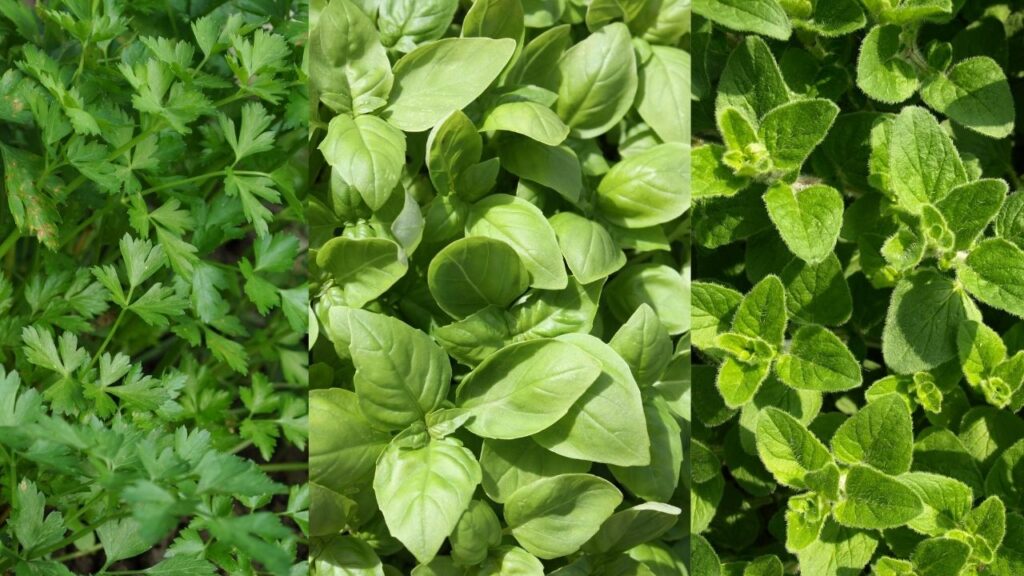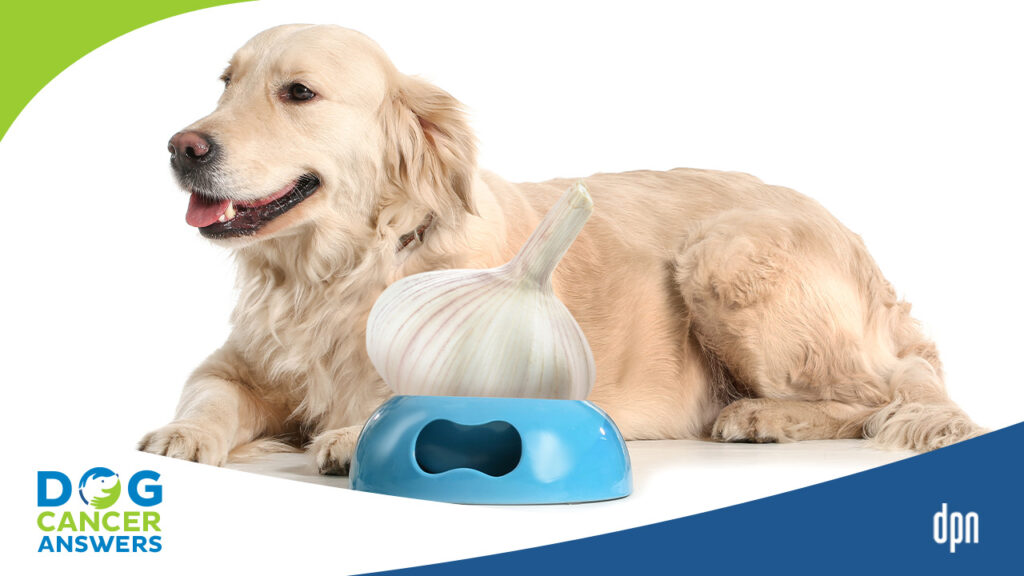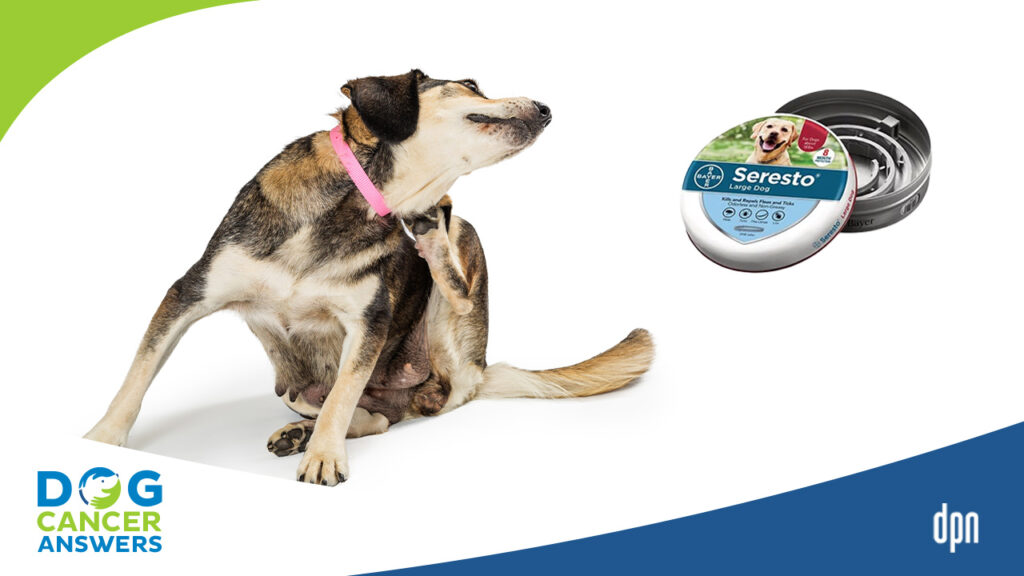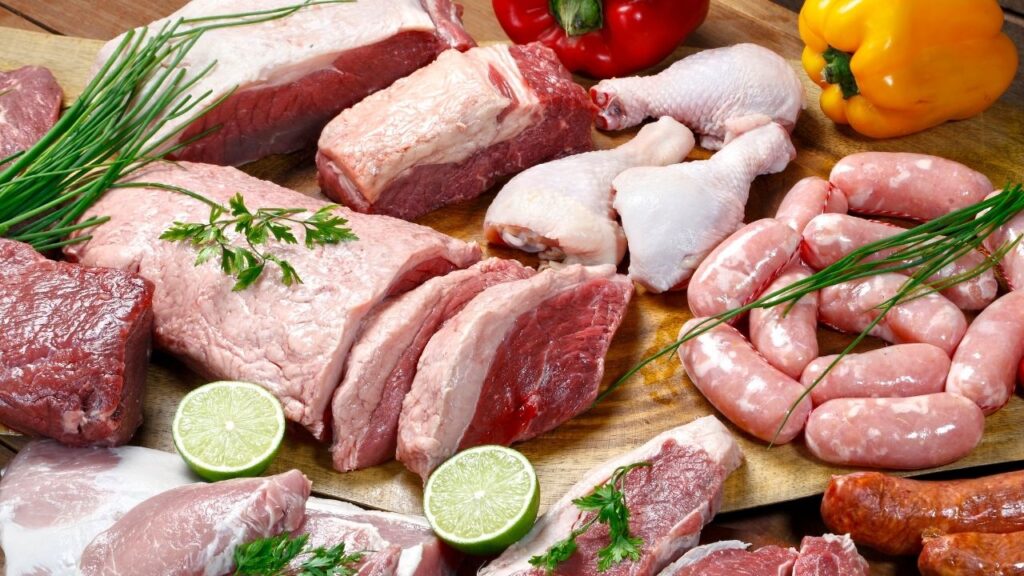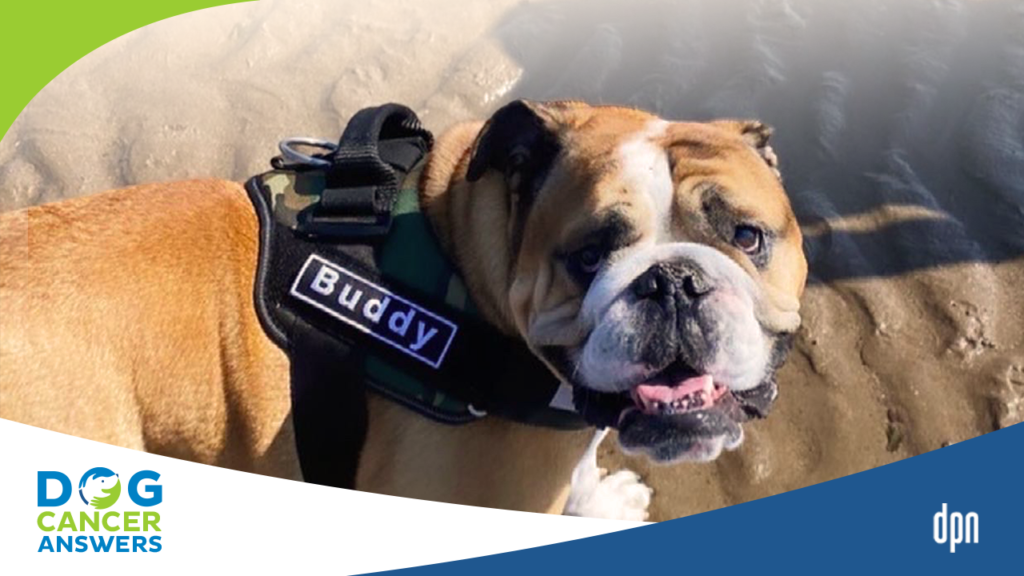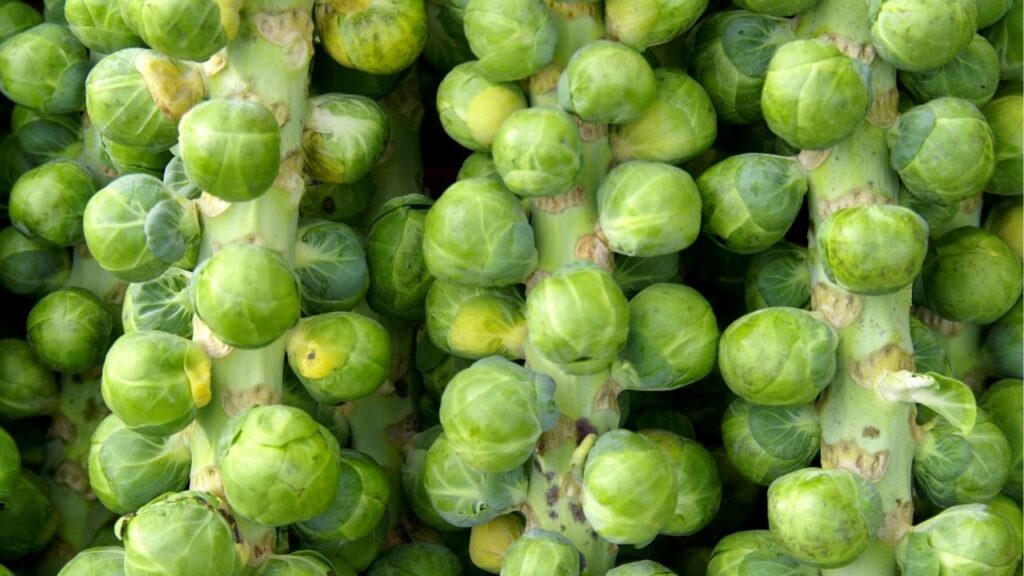Garlic has some excellent health benefits; and you should know the pros and cons of garlic for dogs before adding it to your dog’s diet. Small amounts may be tolerated, but too much has the potential to cause anemia. Garlic should never be given to cats as they are much more sensitive to this oxidative damage and the resulting anemia can be severe.
Key Takeaways
- Garlic is safe for dogs if you feed it in the right amounts. As with all foods, it can be toxic in high amounts.
- If you stay under the dose of 5 g/kg (each clove is around 3-7 grams) you will have less of a chance of causing adverse effects. Always speak to your vet first about your dog’s specific situation before adding garlic.
- A small amount of whole garlic is okay for most dogs. The lowest toxic dose noted is 5 g/kg so if you stay below this, it is generally safe.
- Some breeds are more susceptible to red blood cells damage such as the Akita, Shiba Inu, and Japanese Chin. Ask your veterinarian if you have one of these breeds.
- If your dog eats a small amount of whole garlic clove, the risk of toxicity is very low. If your dog eats a large amount, an unknown amount of garlic, or garlic salt/powder please call your veterinarian or the pet poison hotline to help you find out if the amount will cause toxicity.
- Garlic powder is much more concentrated (approximately 8 cloves per teaspoon), so a small amount can be much more dangerous.
Garlic for Dogs: Delicious, Healthy, and Controversial
We are all familiar with garlic as we often use it to flavor the meals we prepare and eat. Can dogs eat garlic? Yes — using garlic for dogs is possible, with caution.
Garlic is an Allium
Garlic is an edible bulb and part of the allium family. Other foods in the allium family are leeks, onions, chives, scallions, and shallots.
Plants in the allium family contain N-propyl disulfides and thiosulfates. These compounds can cause damage to the red blood cells of dogs and cats but not humans.8
So why do we even want to talk about garlic for dogs? Because small amounts of garlic may be beneficial and not harm your dog.
Garlic’s Benefits for Dogs
Let’s look at the science and health benefits behind this flavorful bulb.
Allicin is the specific compound thought to provide health benefits. It is formed by two enzymes found in garlic cloves. The first, alliin, is a nonvolatile, odorless sulfur. The second, alliinase, is a pungent, volatile sulfur compound.4
Alliin is unstable, and heat can reduce its yield, so we’re looking at raw garlic’s benefits, not cooked garlic.
Dr. Dressler explains why garlic can be helpful and safe for dogs on DOG CANCER ANSWERS.
Human Studies on Garlic’s Anti-Cancer Benefits
Human studies on garlic as an anti-cancer supplement have had mixed results.
- Some studies have shown that homemade garlic extract can inhibit the growth of cancer cells in vitro (in the lab), including breast cancer and multiple myeloma.5
- Another paper noted that while garlic may reduce cancer growth, more studies are needed, and the amount needed to lower the risk of developing cancer is unknown.4
- Epidemiological studies on esophageal, liver, pancreatic, and biliary tract cancer found anticancer effects of garlic, and in vitro studies revealed cell proliferation inhibition, apoptosis, control of invasion, decrease of angiogenesis, and a reduction of harsh chemotherapy side effects.5
Canine Studies on Garlic’s Anti-Cancer Benefits
An in vitro study on canine mammary cancer found garlic effective in reducing the growth of canine mammary tumor cells.7
Another study on long-term oral administration of garlic extracts in dogs at a dose of 90 mg/kg/day for 12 weeks did not show any adverse side effects in dogs. They also found upregulated phase II antioxidants, which suggests garlic might safely contribute to dogs’ health, provided an appropriate dose.6
With All These Benefits, Why Is Giving Garlic to Dogs Controversial?
As noted above, dogs are sensitive to N-propyl disulfides and thiosulfate compounds in Allium plants. When metabolized, these compounds cause oxidative damage to the red blood cells, causing severe anemia.
This website is about dogs but just a quick feline sidebar: cats are not small dogs, and they are VERY sensitive to allium toxicity so do not ever feed your cat garlic.
It’s also true that garlic is the most potent of the allium plants, five times more toxic than onions and leeks.8 Garlic can also cause gastrointestinal issues, including gastric ulceration, vomiting, and diarrhea.1
Well, that sounds distressing, doesn’t it? That’s where the controversy is. Garlic can be toxic, but as with all substances, the dose matters. In the case of garlic, more is not better.
How Much Garlic is Too Much Garlic for Dogs?
Some documentation shows that even in small doses, garlic in some dogs can have toxic effects, but it is more common with larger amounts or regular ingestion.1
The true toxic dose of garlic is not fully known, as various studies have had conflicting findings. The AKC mentions that 15-30 grams of garlic per kilogram of weight are needed to have toxic effects, while other veterinary literature says 3-6 grams per kilogram is enough to be toxic.8
The average garlic clove is 5 grams. So, for a 25-pound dog, that would mean anywhere between 6 cloves and 60 cloves may cause an issue. That is a really wide range; as you can see, the data is slightly murky!
What About Garlic Powder for Dogs?
Remember that garlic powder is much more concentrated (approximately eight cloves per teaspoon), so a small amount can be much more dangerous than a similar amount of raw garlic. Do not give your dog garlic powder or use it in their food, because the risk of overdose is much higher than with raw garlic.
What’s the Real Risk?
Infrequent, small amounts of garlic are unlikely to cause toxicity in most dogs, but large amounts, garlic salts, or frequent administration carries a higher risk.
Studies have found that Japanese dog breeds, including Akitas, Shiba Inus, and Japanese Chins, are more sensitive to allium-induced oxidative damage on red blood cells, so do not feed these breeds garlic. It is also best to avoid feeding pregnant dogs or puppies garlic.9
Garlic in Flea and Tick Preventatives
Garlic is also often an ingredient in natural flea and tick preventatives. It is unclear how much garlic is in some natural flea and tick prevention products, so please consult a vet if you wish to feed your dog garlic supplements for flea and tick prevention.
Also, remember that there is inconclusive evidence regarding garlic as an effective parasite prevention.2
Dr. Nancy Reese explores flea and tick prevention methods on DOG CANCER ANSWERS.
Signs of Garlic Toxicity
It’s rare for dogs to eat enough garlic to make themselves sick, but you should be aware of the signs a dog has had too much garlic.
Signs of garlic toxicity are lethargy, weakness, ataxia, pale gums, vomiting, increased heart and respiratory rate, red/brown urine, hyper-salivation, and blue-tinged gums.1
Where to Get Garlic for Dogs
Garlic is generally sold as whole cloves at grocery stores. Raw garlic is preferred. Garlic can be grown organically or traditionally. Organics tend to have less chemical residue, but there is no known difference in the availability of allicin based on growth practices.
Garlic can also be purchased canned or in salt form. The salt/powder form of garlic is more concentrated, so smaller amounts may cause issues and you should not use it with your dog.1
It also comes in capsule form as a supplement. If you are considering using a supplement form of garlic, ask your veterinarian for the right dose for your dog, and be careful to give only that amount.
How to Prepare Garlic for Your Dog
Preparation of garlic involves removing the papery outside of the bulb and mincing the cloves, which then can be fed raw whole, minced, or cooked with other foods.
How Much Garlic to Feed Your Dog
If you stay under the commonly noted toxic dose of 5 g/kg (each clove is around 3-7 grams), you will have much less chance of causing adverse effects.
To be conservative, staying under 3 g/kg and not feeding it consistently will reduce the chance of adverse effects even further. This translates into around 1-2 cloves (depending on their size) per 10 pounds of body weight.
Always speak to your vet first about your dog’s situation before adding garlic, to ensure they are not sensitive to it or already suffering from anemia.
When Not to Feed Garlic to Your Dog
- Do not use garlic if your pet is already anemic due to the stress garlic can put on red blood cells.
- Do not use with Japanese dog breeds that are more susceptible to red blood cell damage, such as the Akita, Shiba Inu, and Japanese Chin.
- Do not use it in large amounts.
- Do not use it in young or pregnant animals.
- Jones S. Can dogs eat garlic? PetMD. https://www.petmd.com/dog/nutrition/can-dogs-eat-garlic. Published August 23, 2022. Accessed January 22, 2023.
- Burke A. Can dogs eat garlic? We’ve got the answer. American Kennel Club. https://www.akc.org/expert-advice/nutrition/can-dogs-eat-garlic/. Published August 4, 2022. Accessed January 22, 2023.
- Petrovic V, Nepal A, Olaisen C, et al. Anti-Cancer Potential of Homemade Fresh Garlic Extract Is Related to Increased Endoplasmic Reticulum Stress. Nutrients. 2018;10(4):450. Published 2018 Apr 5. doi:10.3390/nu10040450
- Nicastro HL, Ross SA, Milner JA. Garlic and onions: their cancer prevention properties. Cancer Prev Res (Phila). 2015;8(3):181-189. doi:10.1158/1940-6207.CAPR-14-0172
- Zhou Y, Li X, Luo W, et al. Allicin in Digestive System Cancer: From Biological Effects to Clinical Treatment. Front Pharmacol. 2022;13:903259. Published 2022 Jun 13. doi:10.3389/fphar.2022.903259
- Yamato O, Tsuneyoshi T, Ushijima M, Jikihara H, Yabuki A. Safety and efficacy of aged garlic extract in dogs: upregulation of the nuclear factor erythroid 2-related factor 2 (Nrf2) signaling pathway and Nrf2-regulated phase II antioxidant enzymes. BMC Vet Res. 2018;14(1):373. Published 2018 Nov 29. doi:10.1186/s12917-018-1699-2
- Sundaram SG, Milner JA. Impact of organosulfur compounds in garlic on canine mammary tumor cells in culture. Cancer Lett. 1993;74(1-2):85-90. doi:10.1016/0304-3835(93)90048-e
- Garlic. Pet Poison Helpline. https://www.petpoisonhelpline.com/poison/garlic/. Published April 1, 2022. Accessed January 22, 2023.
- Cope RB. Toxicology brief: Allium species poisoning in dogs and cats. DVM 360. https://www.dvm360.com/view/toxicology-brief-allium-species-poisoning-dogs-and-cats. Accessed January 22, 2023.
Topics
Did You Find This Helpful? Share It with Your Pack!
Use the buttons to share what you learned on social media, download a PDF, print this out, or email it to your veterinarian.

